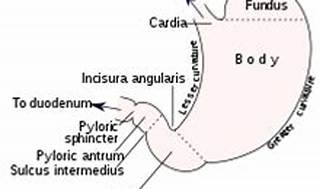The first dose of the immunization for Measles, mumps, and rubella (MMR) is given at the age of
The Correct Answer is {"dropdown-group-1":"A"}
Choice A rationale:
The first dose of the immunization for Measles, mumps, and rubella (MMR) is typically given at the age of 1 year. This timing is in line with the recommendations from organizations like the Centers for Disease Control and Prevention (CDC) and the World Health Organization (WHO). Administering the MMR vaccine at this age ensures early protection against these contagious diseases. Delaying the vaccine could put the child at risk, especially considering the highly infectious nature of measles.
Choice B rationale:
Administering the MMR vaccine at 18 months is not in line with the recommended immunization schedule. Waiting until 18 months might expose the child to the risk of contracting these diseases during the gap period, as maternal immunity wanes after the first few months of life.
Choice C rationale:
Administering the MMR vaccine at 2 years is later than the recommended age. Waiting until 2 years could leave the child vulnerable to these diseases during the time between birth and the administration of the vaccine. Early immunization, starting at 1 year, provides essential protection during this critical period.
Choice D rationale:
Waiting until 4 years to administer the MMR vaccine is not in line with the standard immunization schedule. Delaying the vaccine until 4 years of age leaves the child susceptible to these diseases for a more extended period, which is not recommended for preventing outbreaks and ensuring community immunity. The first dose of the immunization for Haemophilus influenzae type B (Hib) is given at the age of 2 months.
Nursing Test Bank
Naxlex Comprehensive Predictor Exams
Related Questions
Correct Answer is D
Explanation
Choice A rationale:
Do not administer pancreatic enzymes if the child is receiving antibiotics. Rationale: There is no specific contraindication to administering pancreatic enzymes while the child is receiving antibiotics. Pancreatic enzymes are essential for the digestion and absorption of nutrients in children with cystic fibrosis, and they should be continued even if the child is on antibiotics.
Choice B rationale:
Decrease dose of pancreatic enzymes if the child is having frequent, bulky stools. Rationale: Bulky, foul-smelling stools are common in cystic fibrosis due to malabsorption of nutrients. Pancreatic enzyme replacement therapy is crucial to aid in the digestion of fats and proteins. If the child is experiencing frequent, bulky stools, it may indicate inadequate enzyme dosage, and the healthcare provider should be consulted to adjust the dosage or formulation of pancreatic enzymes. Choice
Correct Answer is C
Explanation

Explore
The correct answer is choice C. Visible peristalsis and weight loss.
Choice A rationale:
Abdominal rigidity and pain on palpation are not typically indicative of pyloric stenosis. These symptoms could be associated with a variety of other gastrointestinal conditions.
Choice B rationale:
A rounded abdomen and hypoactive bowel sounds are not specific to pyloric stenosis. These symptoms could be seen in various gastrointestinal disorders.
Choice C rationale:
Visible peristalsis and weight loss are classic symptoms of pyloric stenosis. The condition causes a narrowing of the opening from the stomach to the small intestine, preventing food from passing through. This leads to vomiting after feeding, persistent hunger, and weight loss since very little food passes to the small intestines.
Choice D rationale:
Distention of the lower abdomen and constipation are not typically indicative of pyloric stenosis. These symptoms could be associated with a variety of other gastrointestinal conditions.
Whether you are a student looking to ace your exams or a practicing nurse seeking to enhance your expertise , our nursing education contents will empower you with the confidence and competence to make a difference in the lives of patients and become a respected leader in the healthcare field.
Visit Naxlex, invest in your future and unlock endless possibilities with our unparalleled nursing education contents today
Report Wrong Answer on the Current Question
Do you disagree with the answer? If yes, what is your expected answer? Explain.
Kindly be descriptive with the issue you are facing.
